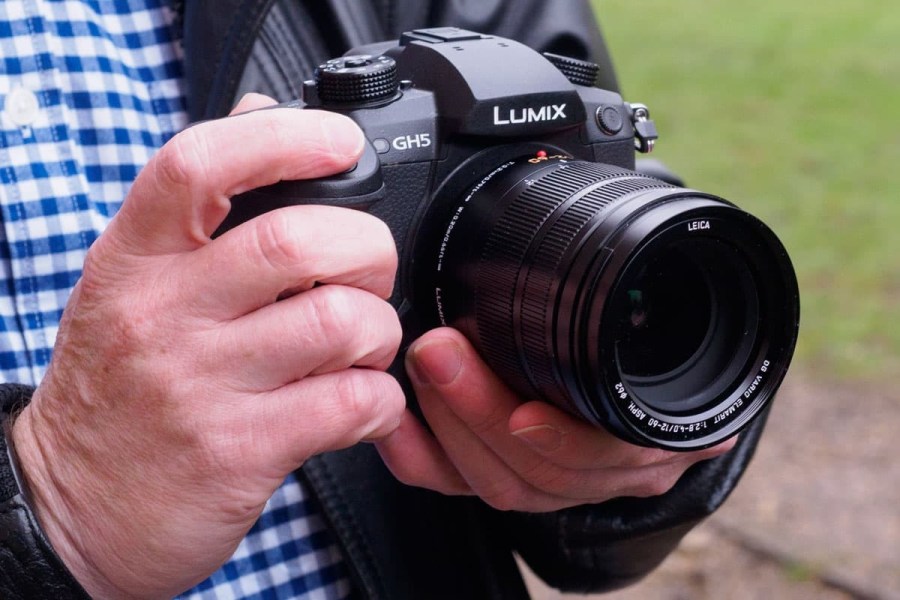We’ve put together this list of the best cameras and accessories for video on a budget to help you get started shooting video without spending a fortune. Video can be an expensive business to get into, especially as higher resolutions like 4K and beyond have become commonplace, but there are plenty of options out there for the budget-conscious videographer. This is doubly true if you’re willing to shop second-hand, and so our list largely consists of cameras you can pick up cheap on the used market. If you’d rather buy new, take a look at our guide to the best cameras for vlogging, where you’ll find new options, including some that are quite affordable.
However, keep in mind that used cameras offer far greater value for money, even ones that are just a few years old. If budget is an issue, this is absolutely where you should be looking. We’ve included insights from our technical team’s reviews, and at the bottom, we have added some top budget-friendly accessories to help you complete your kit.
Best budget cameras for video – our quick list
Looking for the best deal on budget video cameras? Not only will you find the best budget video cameras, but also some of the best deals, as our ‘Buy now’ buttons are set up to automatically take you to the best prices from trusted retailers. You’ll also find a list of other retailers below each camera, so you can find the right deal for you.
- Panasonic Lumix GH5 – Buy now
- Fujifilm X-T3 – Buy now
- Blackmagic Pocket Cinema Camera 4K – Buy now
- Nikon Z6 – Buy now
- Sony A7S II – Buy now
- DJI Pocket 2 – Buy now
- Canon EOS R – Buy now
- GoPro HERO (2024) – Buy now
Why you can trust Amateur Photographer
We spend many hours testing every product we recommend, in detail, in a variety of situations and shooting scenarios, and only use experts for our reviews, so you can be sure that you’re getting the best products. Find out more about our expert writers.
Panasonic Lumix GH5
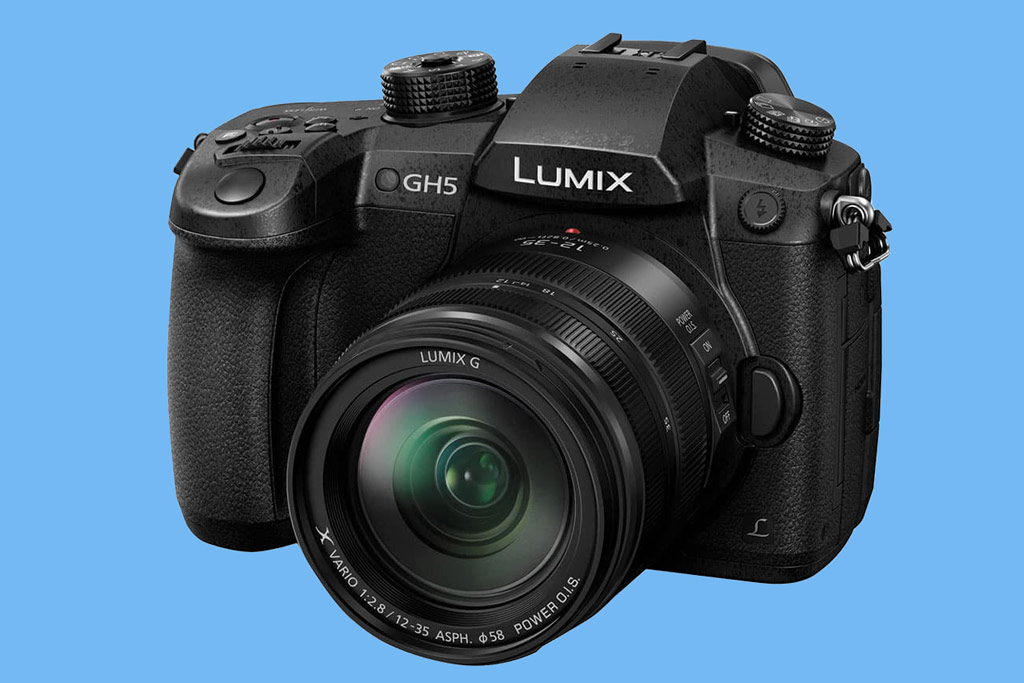
Amateur Photographer verdict
Despite several successors, the Lumix GH5 is still a solid budget video choice today, delivering excellent 4K quality with flexible format options and an extensive MFT lens range.- Huge, budget-friendly lens range
- Full-size HDMI socket
- Flexible video options
- Dated contrast-detect autofocus
- Price: Approx £500
- Sensor: 20.3-million-pixel Four Thirds
- Video Resolution: Up to 4K (4096×2160) 60fps
- Audio: 2x 3.5mm headphone and Mic
- HDMI: Full size – 10-bit 4:2:2 output
- Stabilisation: In-camera and Optical
Launched in 2017, the Panasonic Lumix GH5 is still a superb choice if you want to get started. It’s capable of capturing video at up to an impressive 400Mbps in 4:2:2 10bit at ALL-Intra compression quality – meaning that every frame is a keyframe, which is about the best quality you can get short of raw capture.
It has an articulated screen, all the inputs and outputs you need, including a full-size HDMI socket, and it can even shoot anamorphic footage. However, perhaps the best reason for buying a GH5 is the lenses. There are hundreds of lenses available for the Micro Four Thirds mount. The only downside is that the autofocus can be a little slow with a tendency to hunt.
Read our full Panasonic Lumix GH5 review
Fujifilm X-T3

Amateur Photographer verdict
For stylish-looking footage on a budget, it’s tough to beat Fujifilm cameras. While its Film Simulation modes aren’t full-on LUTs, they’re a great way to inject a bit of personality into your shots.- Good-looking footage straight out of camera
- Lots of high-quality lenses
- Internal 4K 60p
- No built-in stabilisation
- Screen is tilting, not vari-angle
- Price: Approx £630
- Sensor: 26.1-million-pixel X-Trans APS-C
- Video Resolution: Up to 4K (4096×2160) 60p
- Audio: 2x 3.5mm headphone and Mic
- HDMI: Micro size – 10-bit 4:2:2 output
The X-T3 was Fujifilm’s best camera for video when it was released, partly due to the fact it can record 4K 60fps 10-bit 4:2:0 internally or 4:2:2 over HDMI. Everyone loves the Fujifilm Film Simulation picture styles, and these can be used for video, including the Eterna simulation specifically designed for video.
The phase detection autofocus works well compared to the contrast detection systems of the time. The downsides are that the screen is tilting and doesn’t face forward, and there is no in-camera stabilisation, so it is not ideal for vlogging. If you do want to use a monitor to record yourself, then you need to take care as it has a less sturdy Micro HDMI socket.
Read our full Fujifilm X-T3 review
Blackmagic Pocket Cinema Camera 4K
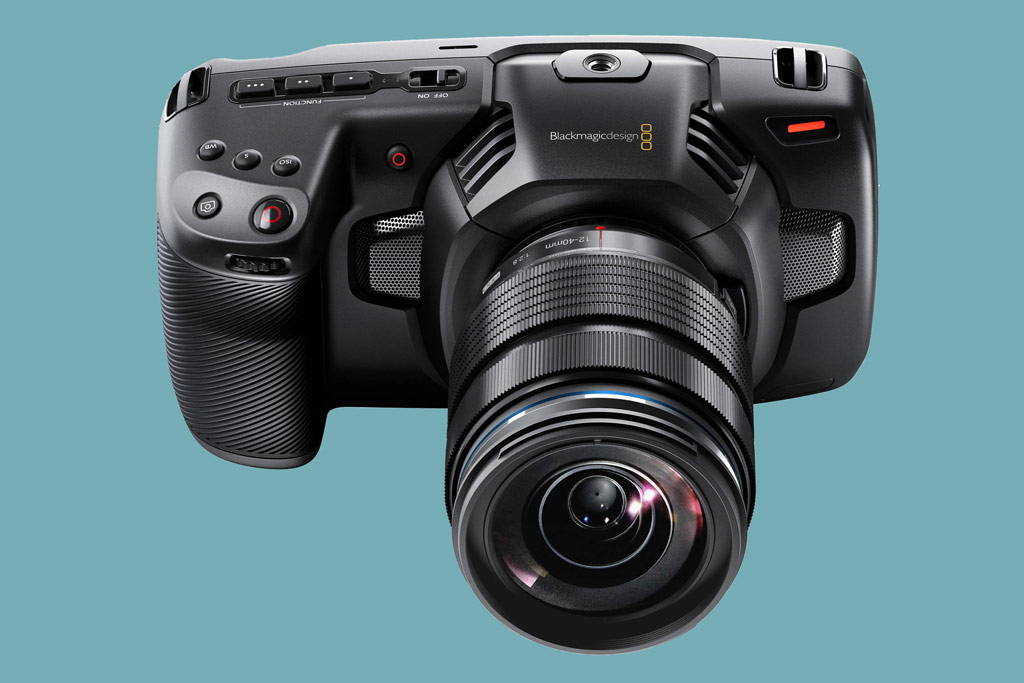
Amateur Photographer verdict
Designed for serious filmmakers and videographers who need something portable, the BMPCC benefits from flexible recording options and the Micro Four Thirds lens mount.- Loads of compression options
- Can record to SSD
- Large 5-inch monitor
- No stabilisation
- Poor autofocus
- Price: Approx £860
- Sensor: Four Thirds
- Video Resolution: Up to 4K (4096×2160) 60p, 12-bit
- Audio: 2x 3.5mm headphone and Mic, Mini-XLR
- HDMI: Full Size – 10-bit 4:2:2
Although it is far from pocketable, the 4K version of the BMPCC is a tiny cinematic video powerhouse. It can shoot Blackmagic Raw 12-bit footage at a compressed rate of as little as 3:1, which means it is recording footage at an incredible 136MB/s (or 1140Mbp/s). If you don’t need that quality, then there are Apple ProRes 10-bit options. To save needing hundreds of memory cards, the BMPCC 4K can record to a suitable SSD via USB-C. In summary, the footage looks incredible for its size and price. The Micro Four Thirds mount means there are plenty of lens choices, and it has a beautifully large 5-inch screen and a simple-to-use operating system. It’s a great choice for budding filmmakers
Downsides are that there is no internal stabilisation and the autofocus is barely usable; this is not a camera for vlogging!
Nikon Z6

Amateur Photographer verdict
The Nikon Z6 delivers fantastic value for a full-frame camera. It’s got brilliant video options, especially if you pair with a recorder – though be aware it can’t take standard SD cards.- Superb full-frame quality
- Effective phase-detection autofocus
- Can record 4K 10-bit to an Atomos Ninja V
- No front-facing screen
- Single slot only takes CFexpress or XQD
- Sensor: 24.5-million-pixel Full Frame
- Price: Approx £680
- Video Resolution: up to 4K 30fps 144Mbps
- Audio: 2x 3.5mm headphone and Mic
- HDMI: Mini – 4:2:2 – 10-bit
Along with the Nikon Z7, the Z6 was Nikon’s first serious attempt to appeal to video users. The internal video recording and features were quite standard for the time, with 4K 30fps 8-bit internal recording. However, via the Mini HDMI socket, it can record 4K 10-bit footage to an Atomos Ninja V (something the Sony A7S II cannot do). The footage could also be saved on the Ninja V in ProRes raw format, making the Z6 a solid camera for those looking for good image quality.
The phase detection autofocus works well in video capture, usually staying locked onto subjects. However, the lack of a front-facing screen makes it tricky for vlogging, unless paired with an Atomos Ninja V or similar external recorder (see our accessory roundup below). The good news is that the releases of multiple successors to this camera, the Z6 II and Z6 III, mean that its price has continued to come down. However, one thing to bear in mind is that it lacks an SD card slot – you have to instead use CFexpress Type B or XQD, though for future-proofing yourself you should definitely choose CFexpress. Nikon initially bet on the wrong side in the card wars, and XQD looks destined to go the way of Betamax.
Read our Nikon Z6 review to learn more
Sony A7S II

Amateur Photographer verdict
An older member of the line that has become famous among videographers, the Sony A7S II still delivers the excellent low-light performance and dynamic range the series is known for.- Excellent in low lgiht
- Broad dynamic range
- Built-in stabilisation
- 4K is quite limited
- No front-facing screen
- Price: Approx £730
- Sensor: 12-million-pixel Full Frame
- Video Resolution: Up to 4K 30fps (3840×2160) 4:2:0
- Audio: 2x 3.5mm headphone and Mic
- HDMI: Full Size – 4:2:2 8-bit output
The key to the popularity of the A7S II is the 12-million-pixel sensor, which combines a good dynamic range with the ability to produce great-looking footage in low light. It has a maximum expanded sensitivity of ISO 409,600.
Its 4K capture looks a little dated, as it can only capture 8-bit footage, either internally or externally, at 30fps. It also only has a tilting screen, rather than front-facing. That said, with built-in stabilisation, full-size HDMI socket and good AF, it marks an excellent introduction to shooting video with the full-frame Sony E-mount cameras. Not to mention there is a good range of Sony and third-party lenses available.
Read our full Sony A7S II review
DJI Pocket 2
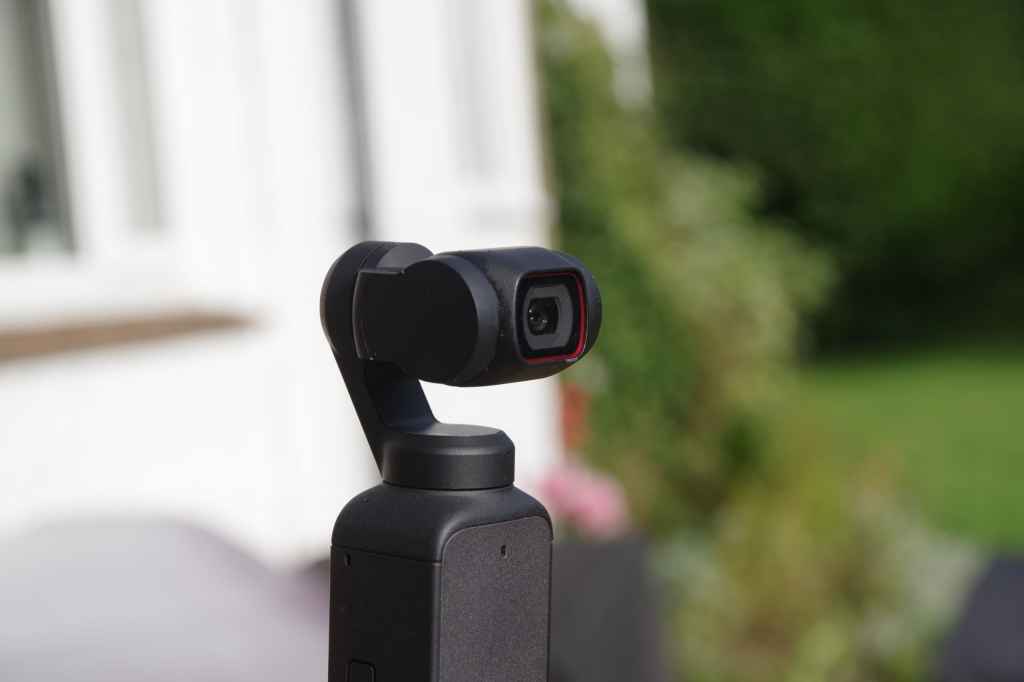
- Price: Approx £250-270
- Sensor: 64-million-pixel 1/1.7in
- Video Resolution: 4K 60fps (3840×2160) 100Mbps
- Audio: Mic input via optional adapter
- HDMI: N/A
A curveball option that certainly won’t be for everyone. The DJI Pocket 2 takes a small smartphone sensor and combines it
with a 3-axis gimbal stabiliser with a small screen. The stabilisation helps to keep everything steady whilst moving, or you can put the camera on a tripod via a third-party mount, and use tracking to have it follow you whilst you move.
It is limited in terms of video quality, and it can be fiddly to use, although it can also plug directly into your smartphone for a
larger screen. However, it is truly pocketable, and the smooth footage and active tracking make it great for vlogging or recording your family or photographic adventures. While the Osmo Pocket 3 has since been released, the Pocket 2 is still widely available and is a good choice for the budget-conscious.
Find out more in our DJI Pocket 2 vs DJI OM 5 comparison
Canon EOS R

Amateur Photographer verdict
Canon’s first full-frame mirrorless camera, the EOS R gives you access to two of the most expansive lens systems in the business – EF (with adapter) and RF.- High-quality 4K
- Dual Pixel autofocus
- Significant crop on 4K
- No sensor-based stabilisation
- Price: Approx £950
- Sensor: 30.4-million-pixel Full Frame
- Video Resolution: Up to 4K (4096×2160) 8-bit 4:2:2
- Audio: 2x 3.5mm headphone and Mic
- HDMI: Mini – 10-bit 4:2:2
It was Canon’s first camera to use the new RF, with much of the technology borrowed from the EOS 5D Mark IV, including the sensor. However, it has some video improvements. Notably, Canon’s Dual Pixel AF works in 4K capture, and the HDMI output is 10-bit 4:2:2.
As you would expect, the handling from the camera is great, and there are all the inputs and outputs you need. However, there are some flaws with the camera when shooting video; There is a 1.8x crop when shooting video and no sensor-based stabilisation. There is digital stabilisation, but this increases the sensor crop for 4K video, so grabbing a wide-angle lens is essential. Thankfully, an RF to EF mount is available, and you can even use many EF-S (APS-C) lenses as more affordable video options.
Read our Canon EOS R review
GoPro HERO (2024)
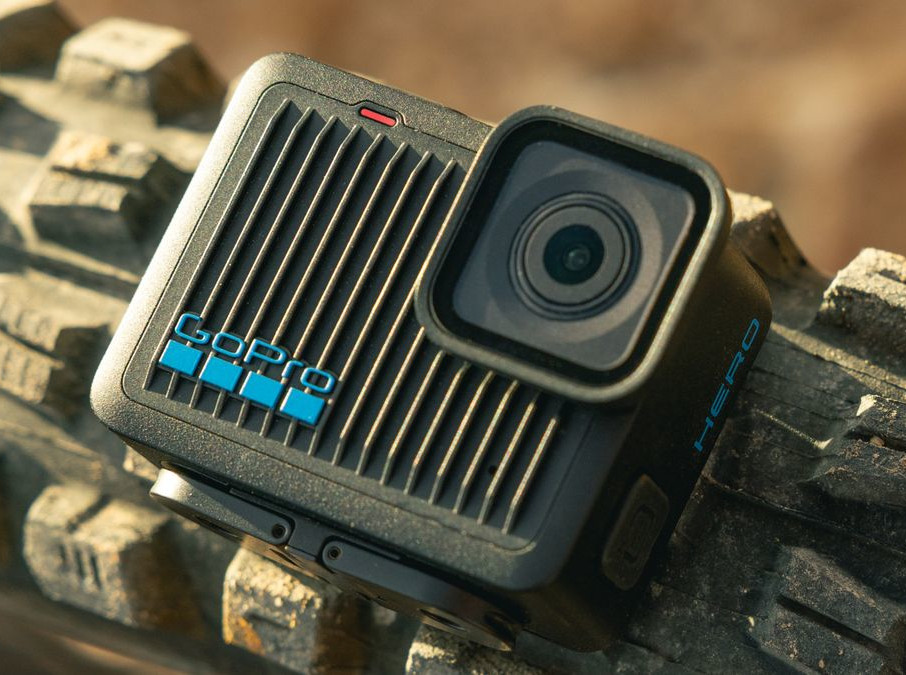
Amateur Photographer verdict
While it’s pretty limited compared to the flagship GoPros, the 2024 HERO will still produce decent action-camera footage in 4K.- Very affordable for a contemporary camera
- Tiny and waterproof
- Effective stabilisation
- Limited video options
- No mic input
- Price: £179
- Sensor: 12-million-pixel 1/2.3in
- Video Resolution: Up to 4K (4096×2160) 30p
- Audio: Built-in mic only
- HDMI: No
As well as its flagship Hero 13 Black, GoPro also released an ultra-budget version of its HERO series of action cameras in 2024. The new camera, confusingly just called ‘HERO’ is absolutely tiny, and records at a maximum resolution / frame rate of 4K 30p, and also lacks the flexible aspect ratio options of the high-end GoPros. While this may not be sufficient for professional content creators, for a lot of users, it’s going to be just fine.
It’s waterproof, as usual, and also happily comes sporting what is arguably GoPro’s best feature for video creators – that silky-smooth Hypersmooth stabilisation, which makes moving footage look so much more professional. For POV action shooting on a budget, look no further.
Best budget video kit: accessories and extras
Putting together a budget video kit isn’t just about the camera. Shooting video is an accessory-heavy discipline – more so than photography – and there’s a lot of kit that will make your life easier, from stabilising gimbals to light-modifying filters. It’s possible to spend a lot of money on all this stuff, but it isn’t mandatory, and there are bargains to be found if you know where to look. Here are our recommendations for putting together a video kit on a budget.
Sigma 18-35mm f/1.8 DC HSM Art lens

- Price: Around £700
This lens from Sigma became an instant favourite amongst videographers by providing an almost perfect focal length zoom for many video productions. The lens is still in production, so used prices can vary hugely depending on the condition and lens mount.
It is an APS-C format lens, available in several DSLR mounts. However, the Canon EF mount is most popular, with many videographers using it with a lens adapter to mount the lens on Micro Four Thirds, Sony E (APS-C) or Fujifilm X-mount cameras. If you are using such a camera, grab this lens and a suitable adapter.
Benro KH25P Video Tripod
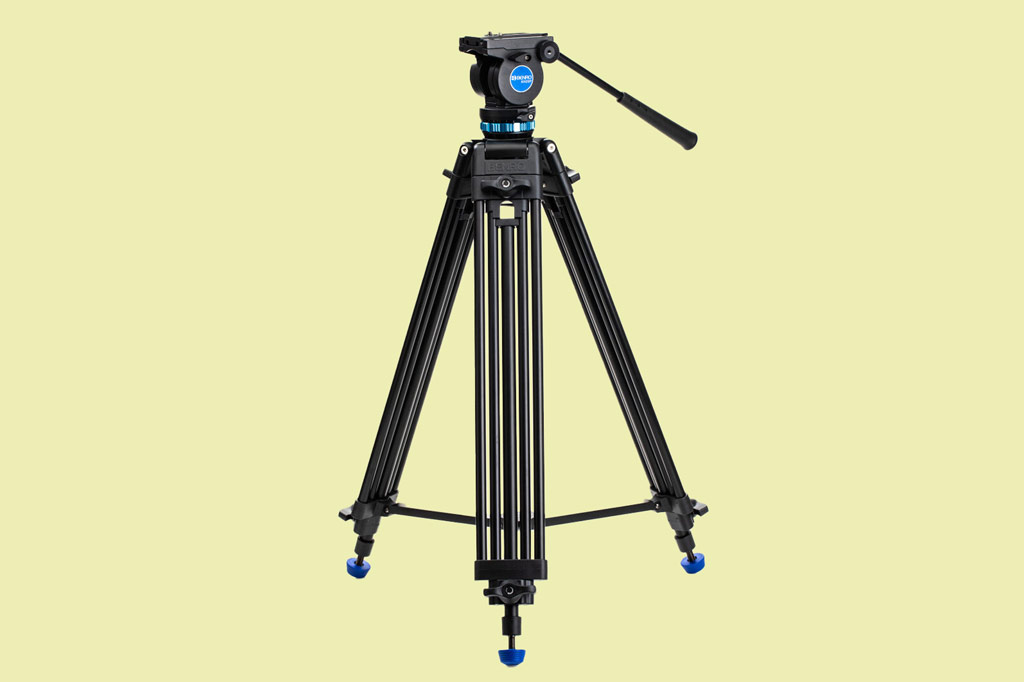
- Price: Around £150
If you are after a good-quality video tripod to get started, look no further than the Benro KH25P aluminium tripod and head. Weighing 3.41kg and coming with a travel case, it is lightweight enough to shoot outside but heavy enough to remain stable. Its sturdy legs can be raised in two sections to a maximum shooting height of 156cm, and the leg braces can be locked to keep everything secure. A basic, but very usable, pan and tilt video head is included.
iFootage Cobra 3 monopod
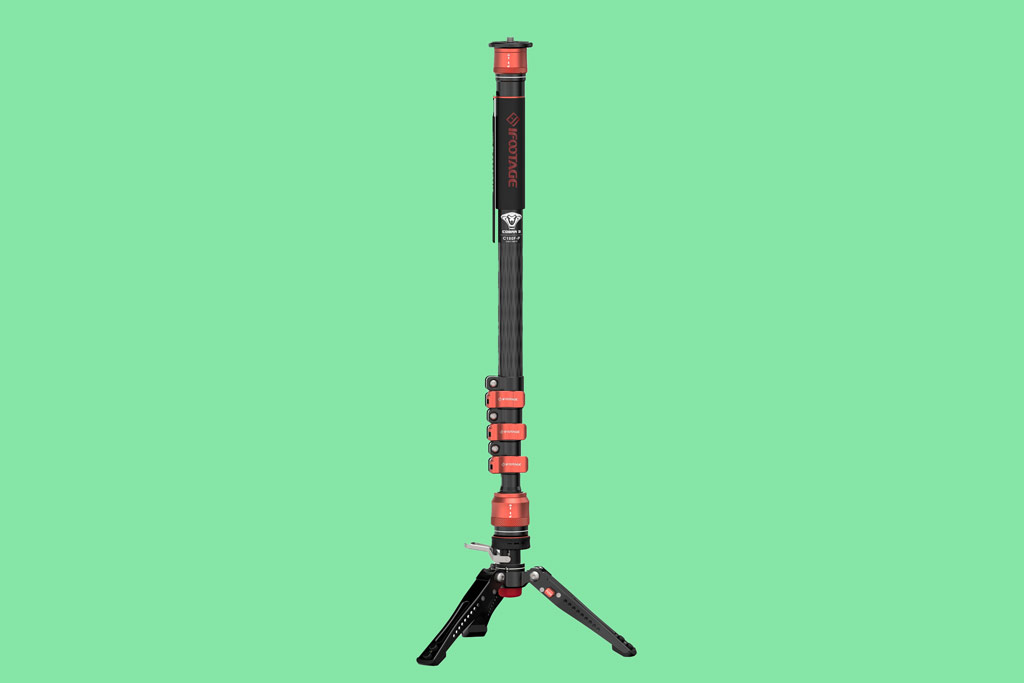
- Price: From £100
Another favourite amongst videographers, the iFootage Cobra 3 monopod is perfect for when you want some stability, but a tripod is overkill. The three-section monopod comes in carbon fibre or aluminium versions, has large flip locks, and may even come with the excellent iFootage video head. However, the beauty is that it has a built-in quick-release system, and the monopod legs can even be used as a table-top tripod. And, if you are brave enough and using a light enough camera, it is great for recording yourself.
DJI Mini 2

- Price: Around £300
Drones have created so many more opportunities for videographers, and they are great fun to fly responsibly. The DJI Mini 2 can capture 4K footage and fold down so that it can be easily taken on your adventures. It weighs under 249g, meaning in many countries it can be flown with only an operator ID and passing a basic responsibility course (but please check local rules before flying). It has a flight time of around 20mins. Overall, the DJI Mini 2 is an easy-to-use drone, with lots of safety features in the DJI app to make sure you stay safe.
Zoom H1n external recorder

- Price: Around £50
An external recorder, such as the affordable Zoom H1n, can be used to record ambient sounds to add depth to your videos, or just use it as an interview mic. Or you can use it as a backup mic and recorder, just in case something happens to your in-camera audio. There is a built-in 3.5mm mic socket if you want to use a specialist mic for a task, and there is a 3.5mm headphone socket to monitor. With recording quality up to 24-bit 96kHz, it can add some audio finesse to your videos.
DJI Ronin SC
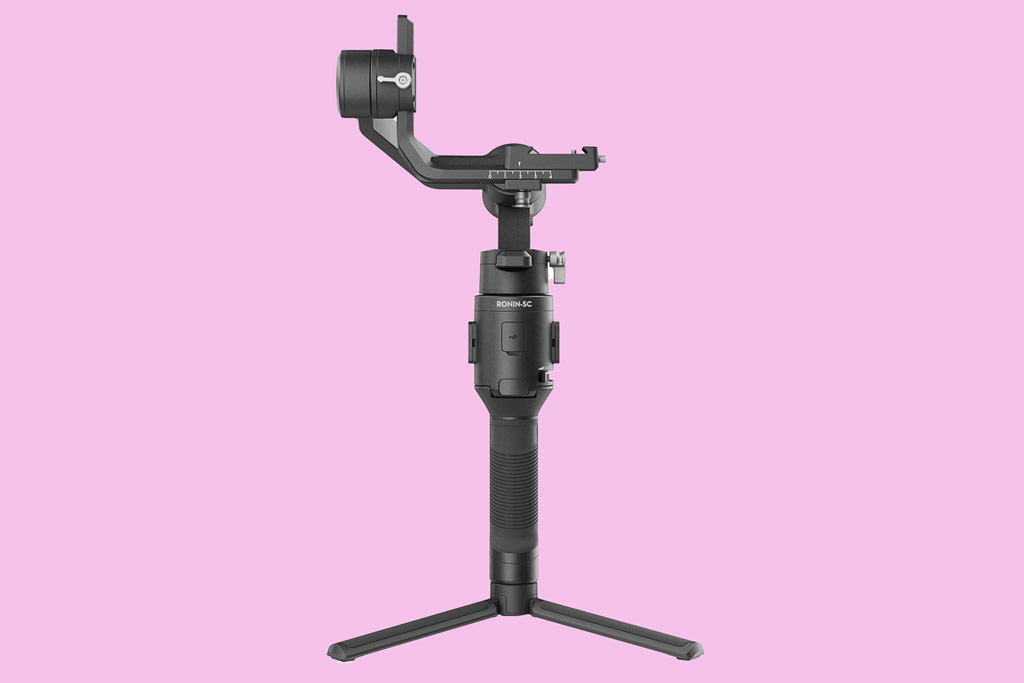
- Price: Around £150
Between lens, sensor and digital stabilisation, getting steady footage is a lot easier than it was. However, if you are walking or moving around, a 3-axis gimbal stabiliser such as the Ronin SC can make a huge difference. The Ronin SC has motors powerful enough for a mirrorless camera or small DSLR, and it includes a small tripod that allows you to easily set and balance your camera, or use it with the DJI app and use ActiveTrack you track a subject, or yourself, as they move around the scene.
Mount adapter

- Price: From £20
Mount adapters can be so cheap that you can buy one new or source a used one for less than £20 – however, it is worth buying from a named brand. With almost everyone shooting on mirrorless cameras, a mount adapter will allow you to use older SLR lenses on a mirrorless camera, and there are almost limitless combinations of adapters and lenses to choose from.
Whilst some adapters can autofocus, generally they aren’t that great. Besides, half the fun is using vintage manual focus lenses and getting a look you can’t get with a modern lens.
Rode Wireless GO Mic kit

- Price: Around £100
Another piece of kit that became an instant classic and shaped how we record sound. The kit consists of a microphone and receiver, which wirelessly pair together. The microphone has a 3.5mm socket for an additional mic to be mounted if you want to upgrade the audio, but for an on-the-go mic kit for vlogging and interviews, it is small, easy to use thanks to USB-C charging and small LCD screens, and most of all, produces great sound quality.
Atomos Ninja V

- Price: Around £400
Recording to an Atomos Ninja V can help you get the most from an older camera. The Ninja V allows for 4K recording to the highest quality ProRes formats, and it can take advantage of the 10-bit HDMI out of some cameras. You can preview LUTS on log footage, or even bake them directly in. On some cameras, there’s an option to save footage in a raw format. Not to mention the 5in screen is streets ahead of a camera screen if you want to film yourself.
X-Rite ColorChecker Passport Video
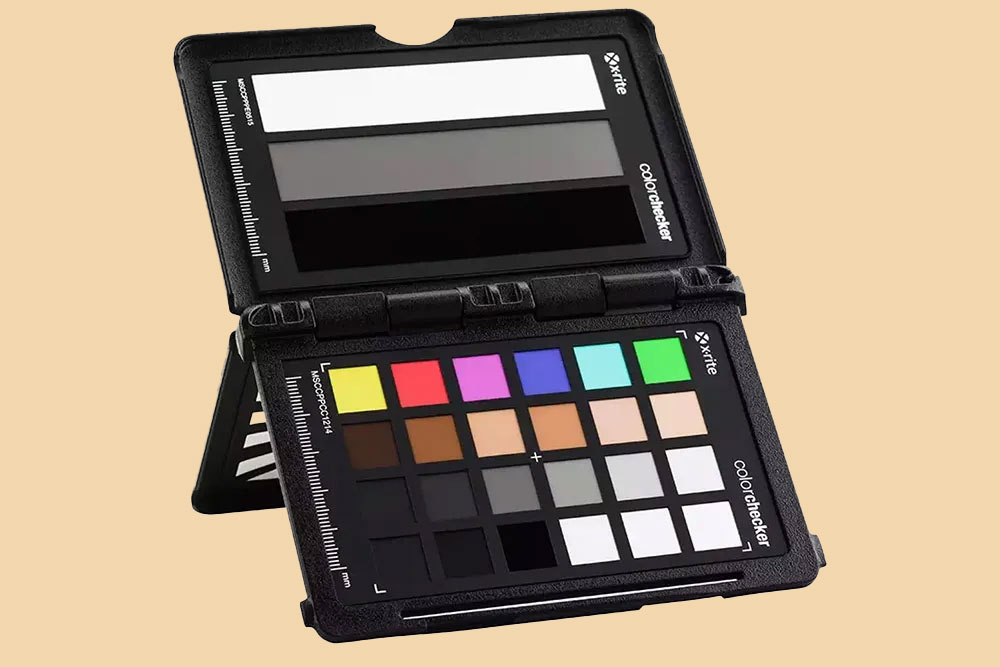
- Price: Around £100
If you are just starting, it is unlikely that you will be shooting raw footage. Getting the colour correct in-camera is important, as there can be a lot less flexibility when it comes to editing colour in the video before the image quality starts to break down. The X-Rite ColorChecker Passport Video has a white balance card, focus checker and a colour palette, giving you everything you need to make sure the colours that you get in-camera are as good as you can get.
Generic Variable ND filter
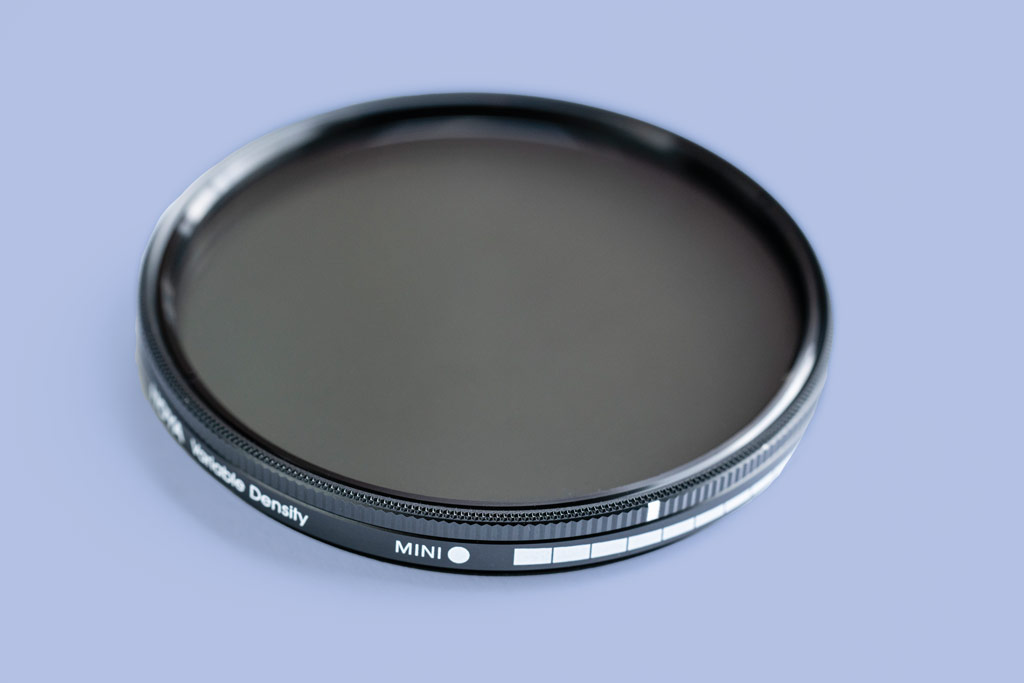
- Price: From £20
When shooting video, your shutter speed remains fixed whilst you are shooting. Similarly, your aperture should remain fixed; changing the aperture if the light changes mid-shot will also change the depth of field. Setting the camera to use Auto-ISO is a good option, but may cause noise and dynamic range to change in the middle of shooting. A Variable ND gets around this by allowing you to manually change the light entering the lens, whilst all the other exposure settings remain the same.
Generic camera cage
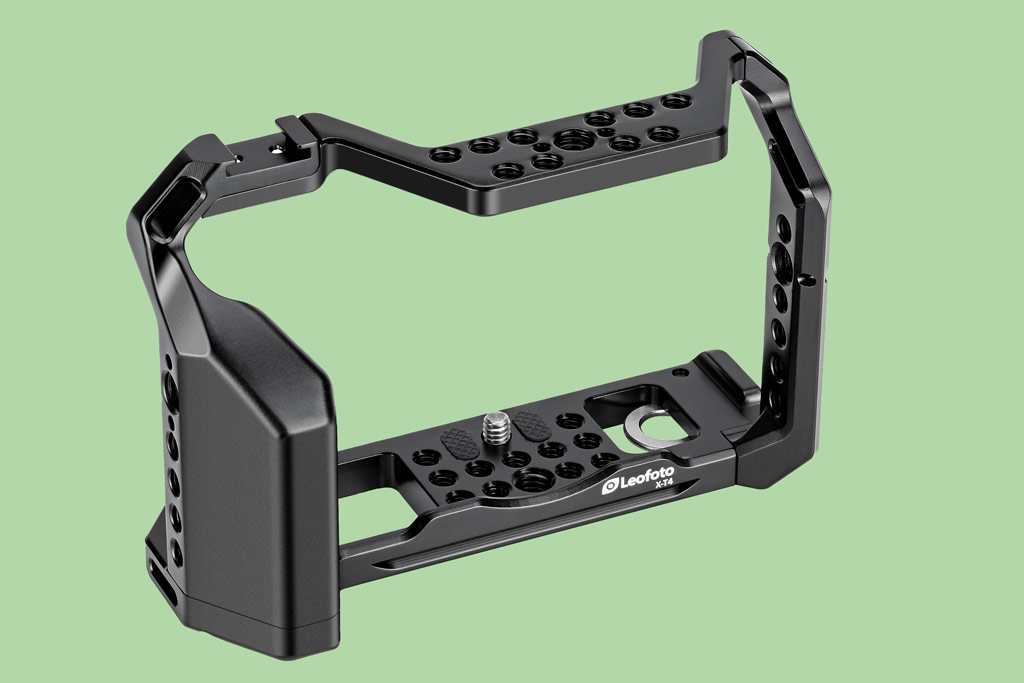
- Price: From £20
A camera cage is a frame that fits around your camera and offers many more mounting points for adding accessories. There is a wide variety of different cages, from a half-cage to a full cage with additional handles. A cage allows you to customise your camera to suit your needs. Use it to mount accessories, from lights, microphones, handles, power supplies, and monitors; a cage can make your video set-up personal to you.
Honourable mentions
We simply don’t have enough room to cover every single camera, but there are a few that we thought deserved at least a mention…
Blackmagic Pocket Cinema Camera

The Blackmagic Pocket Cinema Camera (Around £650) is a tiny Full HD powerhouse featuring a Super 16 size sensor and Micro Four Thirds lens mount. It is simple to use and although the autofocus is awful, the quality of the footage it creates is incredible for its size and price. Expect to pay around £600-650 body only.
Sony ZV-1
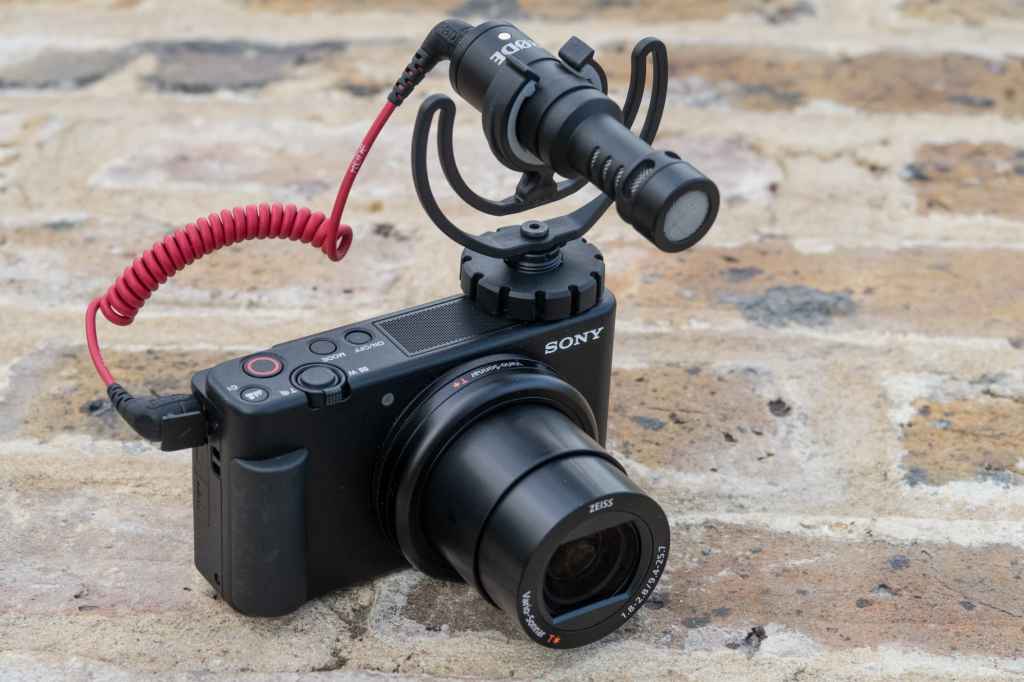
The Sony ZV-1 (Around £450) was Sony’s first dedicated vlogging camera and was based on the RX100 range. With a 1-inch sensor, mic socket, face-detection AF, SteadyShot and Sony Picture Profiles, it is a truly pocketable vlogging camera. Expect to pay around £400-450.
Canon EOS 5D Mark IV
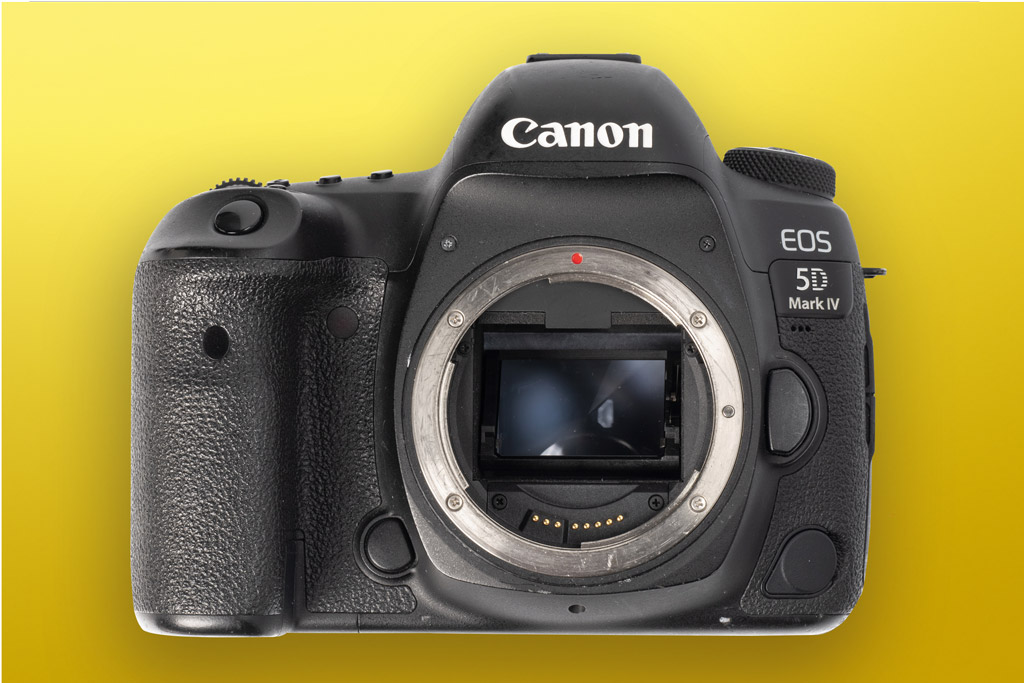
From the dynasty of cameras that kickstarted the video revolution with the 5D Mark II, the Canon EOS 5D Mark IV DSLR (Around £1,000) shoots 4K video and is a great option for those who won’t let their Canon EF system lens go.
Sony A7S

And finally the original Sony A7S (£550). With a 12-million-pixel full-frame sensor, it is about the cheapest full-frame camera for video that you can get and is still one of the best at shooting in low light. Although it can only record Full HD in camera, it can record 4K via HDMI.
How to choose a budget video camera

Resolution
Full HD 1920×1080 resolution cameras are common, but today there is no excuse to be shooting at this lower resolution. You can easily pick up a used camera that shoots in 3840×2160, or even 4096×2160, which is 4K or what’s known as Cinema 4K resolution.
Other things to look out for are the bit depth. All cameras should record in 8-bit, but you will find some that will capture 4K footage in 10-bit either in-camera or via HDMI, which offers more detailed colour.
Image styles
Just as photographers can shoot a variety of different image colour styles, such as standard, portrait or landscape, filmmakers also have these options. Some cameras will have one or two dedicated video styles, as well as the ability to record in a log mode.
Log footage is very flat and low in contrast, allowing you to add your colour style. However, the image can be tricky to adjust without adding banding or image noise, so many people will look for a good built-in cinematic video style.
Autofocus
One area that has received huge advancements is autofocus during video. Older cameras may be prone to hunting for focus randomly or drifting in and out. Others may not have face tracking or eye tracking available. Depending on what you are planning to shoot, check the autofocus features to make sure it meets your demands. If you plan on filming yourself, or your family, then at the very least having face detection AF is a must.
Body style
Whilst most of the cameras we have listed are mirrorless, there are two different styles: the rangefinder and the SLR style. It’s personal preference, but the body style will affect how you hold and use the camera and the type of screen that will be used.
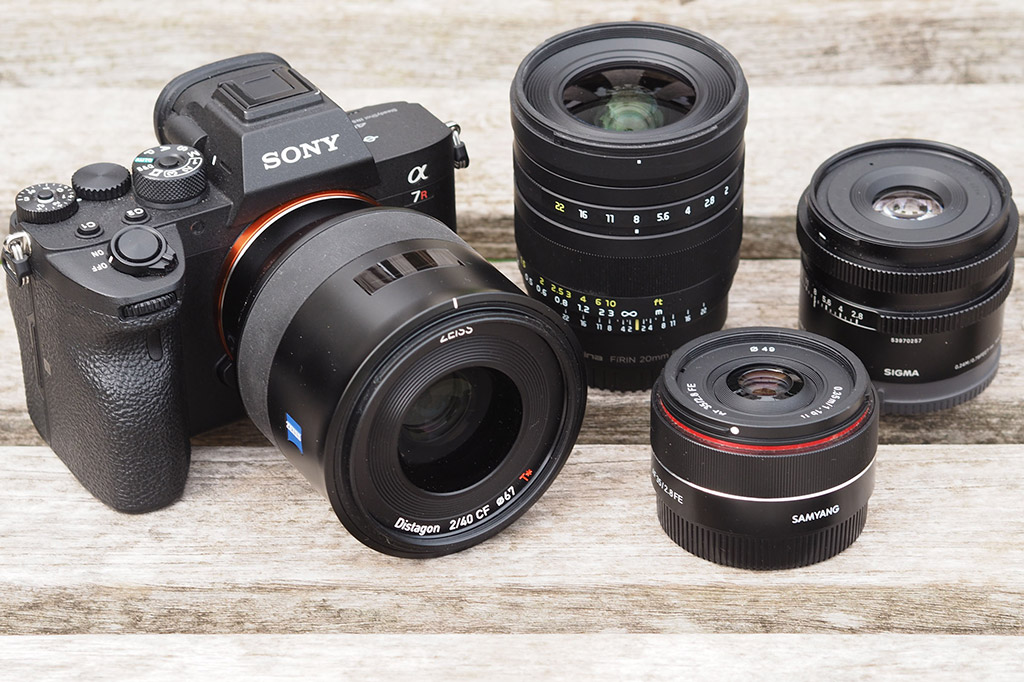
Lenses
Rather than talk about specific lenses, think more about what lenses are available for the system. Older mirrorless systems, such as the Sony E mount or Micro Four Thirds, have a huge number of proprietary and third-party lenses available, and it is easy to pick up a bargain. There will be fewer options with a new camera system.
Connectivity
You will want to grow your camera kit by adding different audio components or even an external screen. A 3.5mm external microphone socket is essential, and a 3.5mm headphone socket is also beneficial because it allows you to monitor the sound as it is recorded.
Also, an HDMI socket is useful if you wish to add an external monitor or recorder. Be warned that many cameras will have Micro HDMI sockets which can be prone to breaking or loose connections. When buying always check the HDMI socket on a camera, or at least ask if it is working. Cameras with a Mini HDMI or better still a full-size HDMI socket offer a more secure and reliable connection.
Screen
If you plan to get in front of the camera, you will want an articulated screen that flips around to the front. However, if you are more of a documentary filmmaker or have no wish to be front and centre, then just a tilting screen should be okay.
Related reading:
- Best vlogging camera for video and YouTube
- The best lenses for video
- Best video editing software
- How to get outstanding audio in your videos
- How to use LUTs for colour grading video
Follow AP on Facebook, Twitter, Instagram, YouTube and TikTok.

